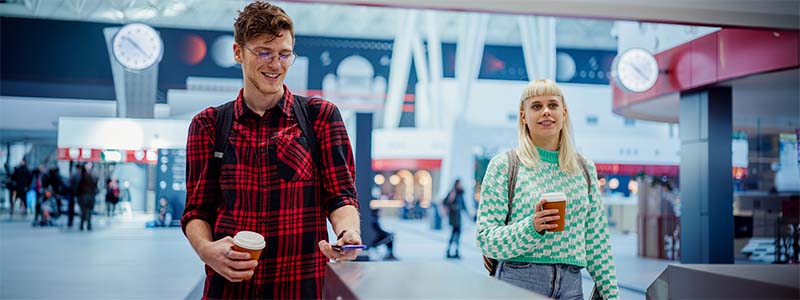

Cities around the world are becoming increasingly dense. According to the World Bank, 4.4 billion people currently live in cities — a number that is expected to double by 2050.¹ More people means more traffic and higher demand for all kinds of services, including public transit.
Modernized transit systems can help address challenges like increased congestion, pollution and road collisions, that result from urban population growth. Tap-to-pay is one way transit operators around the world are making the transportation experience better for riders, delivering greater ease and speed and leaving fewer cars on the road.
Agencies, too, see an upside. Three-quarters of transit agencies reported moderate or large improvements in operating efficiency from moving to contactless payments.² Lower ticketing overhead, increased ridership and improved passenger experiences are some of the reported benefits.
But the benefits don’t stop there — and it isn’t just riders and transit agencies who stand to gain.
Tap-to-pay transit can boost neighboring local businesses.
Data also shows that, when tap-to-pay is enabled on public transit, merchants who do business in the vicinity of transit systems — say, near a bus stop or subway station — benefit too. Based on Visa research, enabling tap-to-pay on transit can bring more than a 15 percent lift in transactions to merchants in the surrounding neighborhoods.³
Tapping a contactless card or device without the need for a separate transit card or handling cash is linked with a powerful halo effect on local communities.³ It allows riders to use the same form of payment throughout their journey — for both fare payment and other everyday purchases such as snacks, drinks, medicine, groceries and other products and services. And 91 percent of transit riders now expect to pay using tap to pay on transit, according to a recent Visa Future of Urban Mobility survey.⁴
Tap-to-pay transit can improve financial inclusion
When transportation systems help riders more easily complete their door-to-door journey to work or school, cities may see financial and social benefits. For instance, digital payment systems can make it easier to subsidize fares, which can help low-income groups to travel more easily, facilitating easier access better jobs and higher wages.
Transportation networks also have the opportunity to give un- and under-banked people a gateway into the digital economy with impact beyond transit. One transit agency in Mexico, for example, introduced a transit card that riders could use to make their utility payments and shop at participating stores.⁵ Unbanked riders suddenly had access to a form of digital payment that they could use for things like gas and groceries.⁵
To date, Visa has helped launch more than 750 urban mobility projects around the world, from Singapore to London and throughout Latin America, where 68 percent of the region’s population travels on public transit.⁶ Digital payments in transit introduces underserved groups to the ease, convenience and security of modern technology, helping them take steps toward participating in the mainstream economy. The benefits cast a wide net over businesses and governments, and enable economies and communities across the socioeconomic spectrum to thrive.
- https://www.worldbank.org/en/topic/urbandevelopment/overview#
- VEEI and ThoughtLab survey of transit agencies and cities (2022) Question: “How large of a beneft, if any, has your transit agency seen in the following areas from implementing open loop EMV contactless payment systems?” Bars represent percentage of agencies reporting each item as a “moderate” or “large” benefit.
- Visa FY21 Q1 EarningsTranscript, https://s1.q4cdn.com/050606653/files/doc_financials/2021/q2/CORRECTED-TRANSCRIPT-Visa,-Inc.(V-US),-Q2-2021-Earnings-Call,-27-April-2021-5-00-PM-ET.pdf
- The Visa Urban Mobility Survey was conducted by Wakefield Research (www.wakefieldresearch.com) among 11,550 adults who take public transportation in 14 markets: U.S., Canada, Australia, New Zealand, France, Italy, U.K., South Africa, UAE, Qatar, Kazakhstan, Peru, Saudi Arabia, Egypt, between May 12th and May 18th, 2022, using an email invitation and an online survey. Quotas were set for 1,000 respondents per market except in Qatar: 100, Kazakhstan: 250, and Peru: 200.
- https://corporate.visa.com/content/dam/VCOM/corporate/visa-perspectives/travel-and-insights/documents/visa-global-urban-mobility-financial-inclusion-accessible.pdf
- https://corporate.visa.com/content/dam/VCOM/corporate/visa-perspectives/travel-and-insights/documents/visa-urban-mobility-in-latin-america-metrorio.pdf